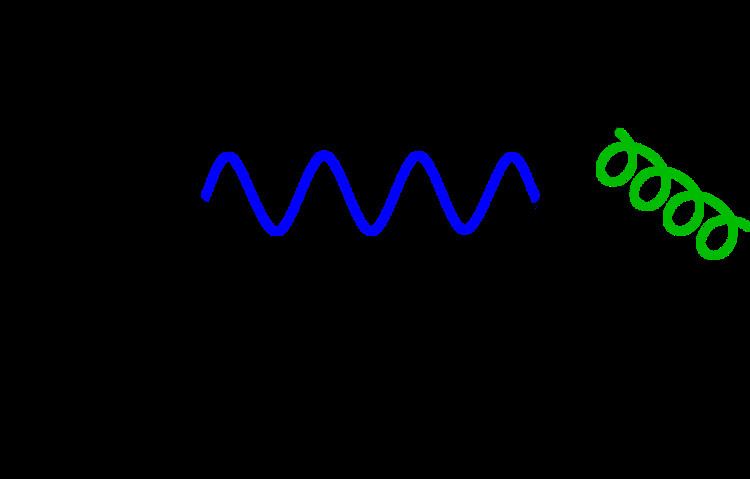The Källén–Lehmann spectral representation gives a general expression for the two-point function of an interacting quantum field theory as a sum of free propagators. It was discovered by Gunnar Källén and Harry Lehmann independently. This can be written as
Δ ( p ) = ∫ 0 ∞ d μ 2 ρ ( μ 2 ) 1 p 2 − μ 2 + i ϵ , where ρ ( μ 2 ) is the spectral density function that should be positive definite. In a gauge theory, this latter condition cannot be granted but nevertheless a spectral representation can be provided. This belongs to non-perturbative techniques of quantum field theory.
In order to derive a spectral representation for the propagator of a field Φ ( x ) , one consider a complete set of states { | n ⟩ } so that, for the two-point function one can write
⟨ 0 | Φ ( x ) Φ † ( y ) | 0 ⟩ = ∑ n ⟨ 0 | Φ ( x ) | n ⟩ ⟨ n | Φ † ( y ) | 0 ⟩ . We can now use Poincaré invariance of the vacuum to write down
⟨ 0 | Φ ( x ) Φ † ( y ) | 0 ⟩ = ∑ n e − i p n ⋅ ( x − y ) | ⟨ 0 | Φ ( 0 ) | n ⟩ | 2 . Let us introduce the spectral density function
ρ ( p 2 ) θ ( p 0 ) ( 2 π ) − 3 = ∑ n δ 4 ( p − p n ) | ⟨ 0 | Φ ( 0 ) | n ⟩ | 2 .
We have used the fact that our two-point function, being a function of p μ , can only depend on p 2 . Besides, all the intermediate states have p 2 ≥ 0 and p 0 > 0 . It is immediate to realize that the spectral density function is real and positive. So, one can write
⟨ 0 | Φ ( x ) Φ † ( y ) | 0 ⟩ = ∫ d 4 p ( 2 π ) 3 ∫ 0 ∞ d μ 2 e − i p ⋅ ( x − y ) ρ ( μ 2 ) θ ( p 0 ) δ ( p 2 − μ 2 ) and we freely interchange the integration, this should be done carefully from a mathematical standpoint but here we ignore this, and write this expression as
⟨ 0 | Φ ( x ) Φ † ( y ) | 0 ⟩ = ∫ 0 ∞ d μ 2 ρ ( μ 2 ) Δ ′ ( x − y ; μ 2 ) being
Δ ′ ( x − y ; μ 2 ) = ∫ d 4 p ( 2 π ) 3 e − i p ⋅ ( x − y ) θ ( p 0 ) δ ( p 2 − μ 2 ) .
From CPT theorem we also know that holds an identical expression for ⟨ 0 | Φ † ( x ) Φ ( y ) | 0 ⟩ and so we arrive at the expression for the chronologically ordered product of fields
⟨ 0 | T Φ ( x ) Φ † ( y ) | 0 ⟩ = ∫ 0 ∞ d μ 2 ρ ( μ 2 ) Δ ( x − y ; μ 2 ) being now
Δ ( p ; μ 2 ) = 1 p 2 − μ 2 + i ϵ a free particle propagator. Now, as we have the exact propagator given by the chronologically ordered two-point function, we have obtained the spectral decomposition.

